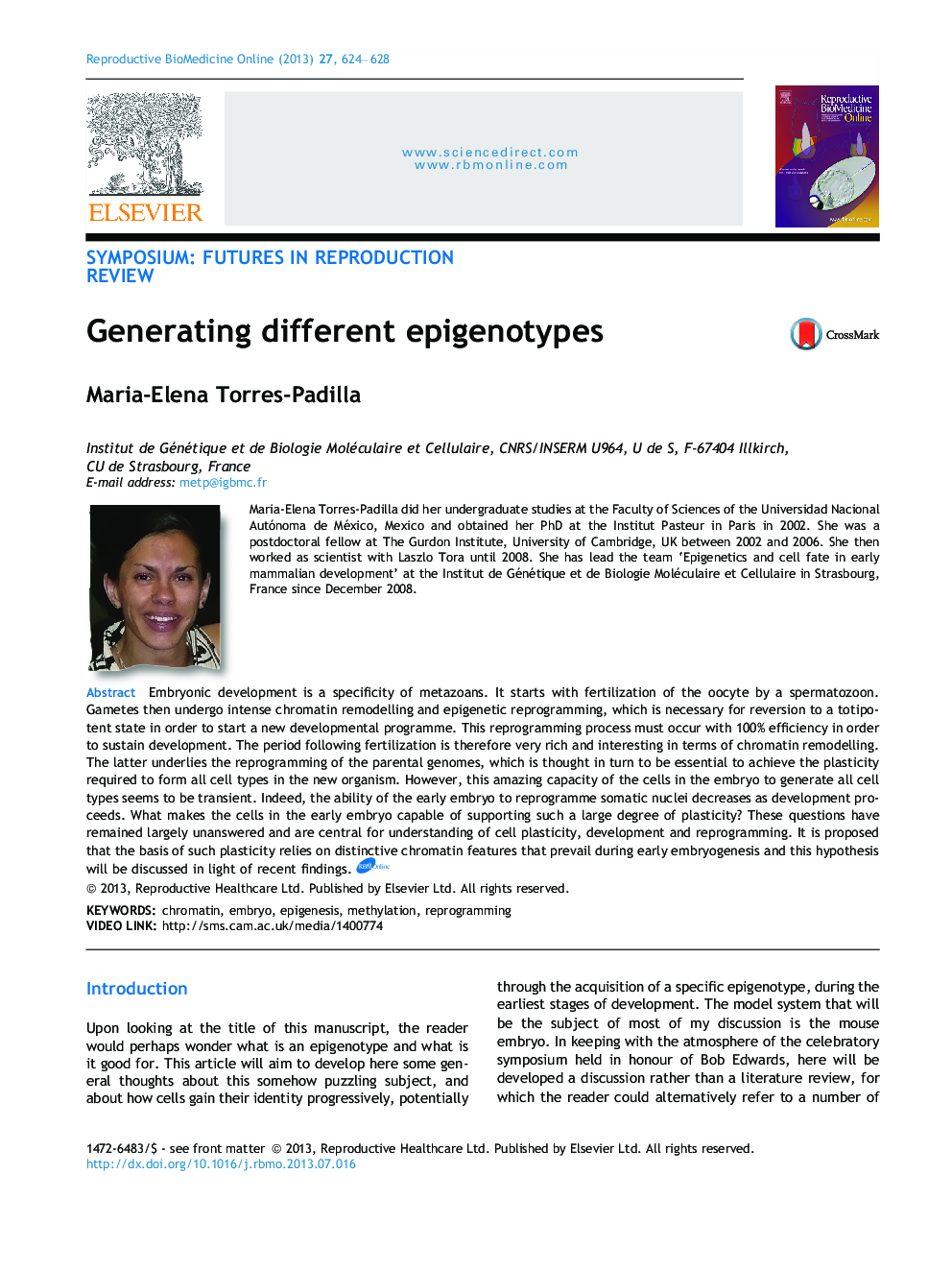| Article ID | Journal | Published Year | Pages | File Type |
|---|---|---|---|---|
| 3970216 | Reproductive BioMedicine Online | 2013 | 5 Pages |
Embryonic development is a specificity of metazoans. It starts with fertilization of the oocyte by a spermatozoon. Gametes then undergo intense chromatin remodelling and epigenetic reprogramming, which is necessary for reversion to a totipotent state in order to start a new developmental programme. This reprogramming process must occur with 100% efficiency in order to sustain development. The period following fertilization is therefore very rich and interesting in terms of chromatin remodelling. The latter underlies the reprogramming of the parental genomes, which is thought in turn to be essential to achieve the plasticity required to form all cell types in the new organism. However, this amazing capacity of the cells in the embryo to generate all cell types seems to be transient. Indeed, the ability of the early embryo to reprogramme somatic nuclei decreases as development proceeds. What makes the cells in the early embryo capable of supporting such a large degree of plasticity? These questions have remained largely unanswered and are central for understanding of cell plasticity, development and reprogramming. It is proposed that the basis of such plasticity relies on distinctive chromatin features that prevail during early embryogenesis and this hypothesis will be discussed in light of recent findings.The question on whether the cells in the early mammalian embryo acquire a different identity before the embryo implants is currently the subject of intense research. The model system that is used most routinely used to address this question experimentally is the mouse. In particular, my laboratory has been interested in understanding the way the DNA is organized and ‘read’ in the individual cells of the preimplantation embryo and as development proceeds. In this short manuscript, I develop some considerations on this subject, putting in perspective also the importance of expanding research to a variety of other mammalian species. Indeed, pathways and regulatory mechanisms that are conserved amongst species are likely to be more relevant to human health.VIDEO LINK: http://sms.cam.ac.uk/media/1400774
